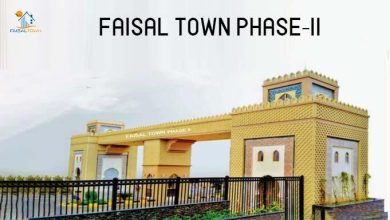The Impact of VR Architecture Software Solutions and Consultants

Digital technology in the fast-growing arena of architectural design redefines, where creativity, teamwork, and visualization are well within the range of the designing process. The Virtual reality (VR) architecture design tools were developed, with a hands-on VR architecture expert. Such cutting-edge tools and services dispose architects and designers to design environments that experience immersive and interactive design approaches and evolve traditional design thinking. This article focuses on VR programming tools in architectural professional consulting and underlines how such professionals are behind the revolution in this area of architecture.
The VR Build module is the perfect tool that enables the architect to locate and communicate their buildings in VR or any part of the 3D digital world.
The architecture technology software solutions are nothing less than a paradigm shift in architecture in terms of how architects come up with their designs, communicate and share their vision, and refine their designs. Utilizing the ‘virtual reality’ technology, these solutions give architects and their clients to witness and feel the architecture in a way that would be unimaginable before virtual reality technology had been invented. Key features of VR architecture software solutions include
- Immersive Visualization: One of the primary advantages of VR architecture software, designed for the field of architecture, is the practicality of walking through the design and judging its structure and scale from a human perspective. The 3-D presentation in which the spatial relationships can be investigated, the lighting conditions can be visualized; the textures of materials may be observed has emerged as a powerful instrument of designing, and enhancing the quality of architecture.
- Real-Time Collaboration: Using architecture VR, design professionals will work together with real-time project owners, team members, and stakeholders, wherever they are placed. It means better communication, collaboration, and alignment with the participating members of the team as well as greater transparency. This is achieved through better decisions by all parties and consequently a higher quality of the process outcomes.
- AIterative Design: VR architecture software provides the flexibility to cycle through concepts quickly and allows architects to work through multiple design alternatives before finalization. This iteration eventually inspires out-of-box thinking and innovation, thus making it possible for architects to challenge and redefine obsolete design principles.
- Client Engagement: The VR Architecture Software brings clients’ engagement to the next level, as clients vicariously feel and this intuitively helps them to see what the designers plan to implement. Instead of mere drawings and material samples, clients can walk their way through virtual spaces and elaborate their ideas, which in turn guarantee the successful project and the customer satisfaction they deserve.
To summarize, VR Architecture Software consultants play a vital role in helping architects with their projects and ensuring the proper usage of the software.
VR architecture program consultants are the key players in architecture firms helping them by integrating and utilizing VR technology. VR specialists of this type build a huge library of experience, expertise, and practical knowledge while advising firms through the implementation process and making sure they maximize the monetary value of VR design software investment. Key functions of VR architecture software consultants include:
- Software Selection and Implementation: VR architecture software service providers are a great help to businesses in selecting the most suitable program within their financial plan. They next supervise the management process making sure software is installed, configured, and operated as it’s supposed to work with the workflow.
- Training and Support: With the help of VR architecture software consultants, the consultants provide comprehensive academic guidance and assistance to architects and designers; thus, these professionals develop the required skill set and the confidence they need to use VR technology professionally. Such can be training sessions in which staff participates actively and workshops on technical support.
- Customization and Integration: Using VR architecture software, a consultant works with the staff to provide VR solutions, which meet a specific need and which is a goal. They can devise special tools, as well as procedural instructions or programs that will allow them to embed their VR technology into the current design process without any disruptions and in many cases, without the need even to change the platforms they use.
- Strategic Guidance: VR architecture software counselors supply architectural firms with a background on strategic wisdom through the VR technology adoption guide. These associations can offer the firms information on sector tendencies, acceptable practices, and developing opportunities which may be important in maintaining industry leadership. The immediate conduit to regional modeling is linked with direct external climate conditions. Finite months or seasons provide these unexpected environments that could significantly impact the well-being of the individuals or the whole regional population.
Conclusion: The TREZI Advantage
In sum, the impact of VR architecture software solutions and consultants as transformers of architectural jobs is undeniable. These new revolutionary tools and services are on the rise by the day and are changing the way architects get to work, share, and communicate with others worldwide and to communicate. This will soon see the creation of new and exciting designs and methods of efficiency. The next big thing in architecture visualization is virtual reality technology, which is among the leaders in this sphere that includes both the software providers for VR architecture and the business consultancy are the developers of the TREZI.
TREZI is right at the helm of VR for rendering environments in absolute immersion, which is a new state of modern technology. Benefiting from its advanced software and a team of experienced specialists, TREZI will let architecture firms take full advantage of VR in their projects through its platform. Interactive 3D visualization, immediate team collaboration, iterative concept design, and client engagement are among TREZI capabilities that facilitate the creation of models and physical models the likes of which, not so long ago, were thought to belong to the land of science fiction.
Working with TREZI, the firm of architecture can wield the VR power, not only to create outstanding design experiences but also to enable the client to see and appreciate the final product before the construction and to be ahead of the peers in terms of competition. With the industry of architectural professions undergoing dynamic changes and responding to ever-new technologies, TREZI will nevertheless keep on moving forward and delivering its mission to come up with the most innovative approaches and let architects shape the future of the built environment.





